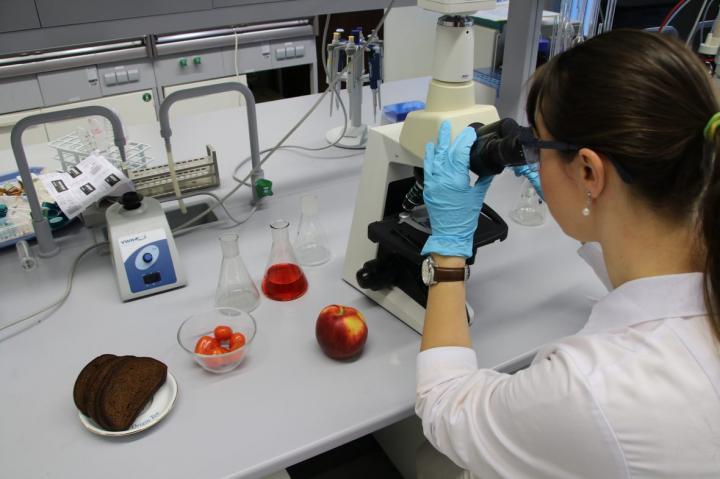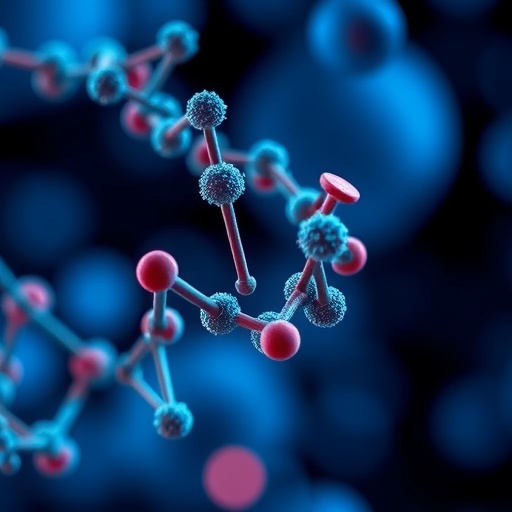
Credit: TalTech
It is known that approximately 80% of human immune system functions in the gastrointestinal tract. Gut bacteria and their metabolites play a fundamental role in the interaction between gut and other organs. Since the organic acids produced by colon bacteria (acetate, lactate, propionate, succinate and butyrate) activate a number of immune and hormonal processes, the microbiota composed of hundreds of different bacterial species is of vital importance for the normal functioning and health of the human body.
Head of the Microbiomics Research Group of TalTech Department of Chemistry and Biotechnology, Senior Researcher Kaarel Adamberg says, “Food is a crucial factor in modulating the gut microbiota and its metabolism. Very important nutrients for the colon bacteria are the dietary compounds that are not broken down by enzymes in the stomach and small intestine and, thus, reach the large intestine. A person requires at least 25 – 35 g of fibre a day for normal bowel function. Water-binding fibers also promote the movement of food in the digestive tract.”
Moreover, the nature of the processes taking place in the large intestine is to a large extent determined by the transit rate of the chyme that can be simulated in vitro by the dilution rate of the continuous culture. Transit rate is a key parameter that determines the nutrient availability for the bacteria, which in turn determines which products can be produced from the food residues. First, bacteria break down carbohydrates, i.e. fibers. At lower transit rates, when carbohydrates have run out, bacteria will break down more proteins, which can result in the formation of toxic substances.
TalTech’s Microbiomics Research Group studied recently how the proportions and metabolism of fecal microbiota change at the range of specific growth rates similar to physiological colonic transit rate. The study focused on the effect of pectin and xylan on the fecal microbiota. Pectin can be found in many fruits and berries (currants, apples, plums) and xylan is an important fiber found mainly in cereals (rye, wheat).
“The experiments showed that the growth rate had a much greater effect on the composition and metabolism of fecal microbiota compared to fiber specificity. From the point of view of nutrition, this means that the amount and diversity of dietary fibers determine the rate of passage of food in the digestive tract and, thus, the growth rate and activity of the gut microbiota. The effect of the transit rate has not been studied in detail so far and the study of combined effects of various factors must be continued in the future. This is an even more complicated task,” Senior Researcher Adamberg says.
As the results of in vitro tests may depend on the initial conditions of the experiment, it was checked whether the same results would be obtained if the culture was stabilized at either high or low dilution rate and the experiments were carried out in both directions: gradually moving dilution rates from slow to fast and from fast to slow. The results suggest that the culture adapted to the changing conditions under both directions of the dilution rate and the results were reproducible. This confirms that the specific growth rate is a key factor in the development of microbial communities.
“We have previously studied the degradation of dietary fibers and the dynamics of gut microbial communities using the fecal samples from children. In this study similar changes in the fecal microbiota were seen in adults’ gut microbiota. In addition, the fecal microbiota was able to adapt to the slow changes in acceleration rate. This could mean than if we are able reduce the time it takes for food to travel through the gut, i.e. increase the transit rate by making changes in dietary patterns, the bacterial community will adapt to the new transit rate and its metabolism will become more favorable to health,” Kaarel Adamberg says.
Controlled in vitro cultivation and up-to-date analytical methods enable systematic evaluation of complex interactions between the members of microbial consortia. This is a challenging, but promising approach for research, industrial and medical applications. It is known that in many cases the diversity of human gut microbiota has decreased so much that diet change will not help, because the beneficial bacteria have been washed out. In such cases, the best solution provided currently is to transplant faeces from a healthy individual into the patient’s colon. If we learn to grow the consortia suitable for transplantation under laboratory or even industrial conditions, the next generation probiotics could be used instead of the fecal transplant, i.e. this would be the artificial microbiota that could be transplanted in individuals dysbiotic gut microbiota.
“This new knowledge about the associations between gut microbial communities and dietary fibers allows the diet modifications supporting personal gut bacteria. Although the results obtained in laboratory experiments need to be verified by human nutrition studies, our previous in vitro results have shown good associations with the outcomes of the human trials,” Kaarel Adamberg says.
###
The findings of the research carried out by researchers of TalTech Department of Chemistry and Biotechnology, Division of Food Technology, were published on 7 Feb. 2020 in the journal Bioprocess Engineering (Frontiers in Bioengineering and Biotechnology) in the article “Use of Changestat for Growth Rate Studies of Gut Microbiota”. https:/
Additional information: Senior Researcher of TalTech Department of Chemistry and Biotechnology, Division of Food Technology, Kaarel Adamberg, [email protected]
Kersti Vähi, TalTech Research Administration Office
Media Contact
Kaarel Adamberg
[email protected]
Related Journal Article
http://dx.




